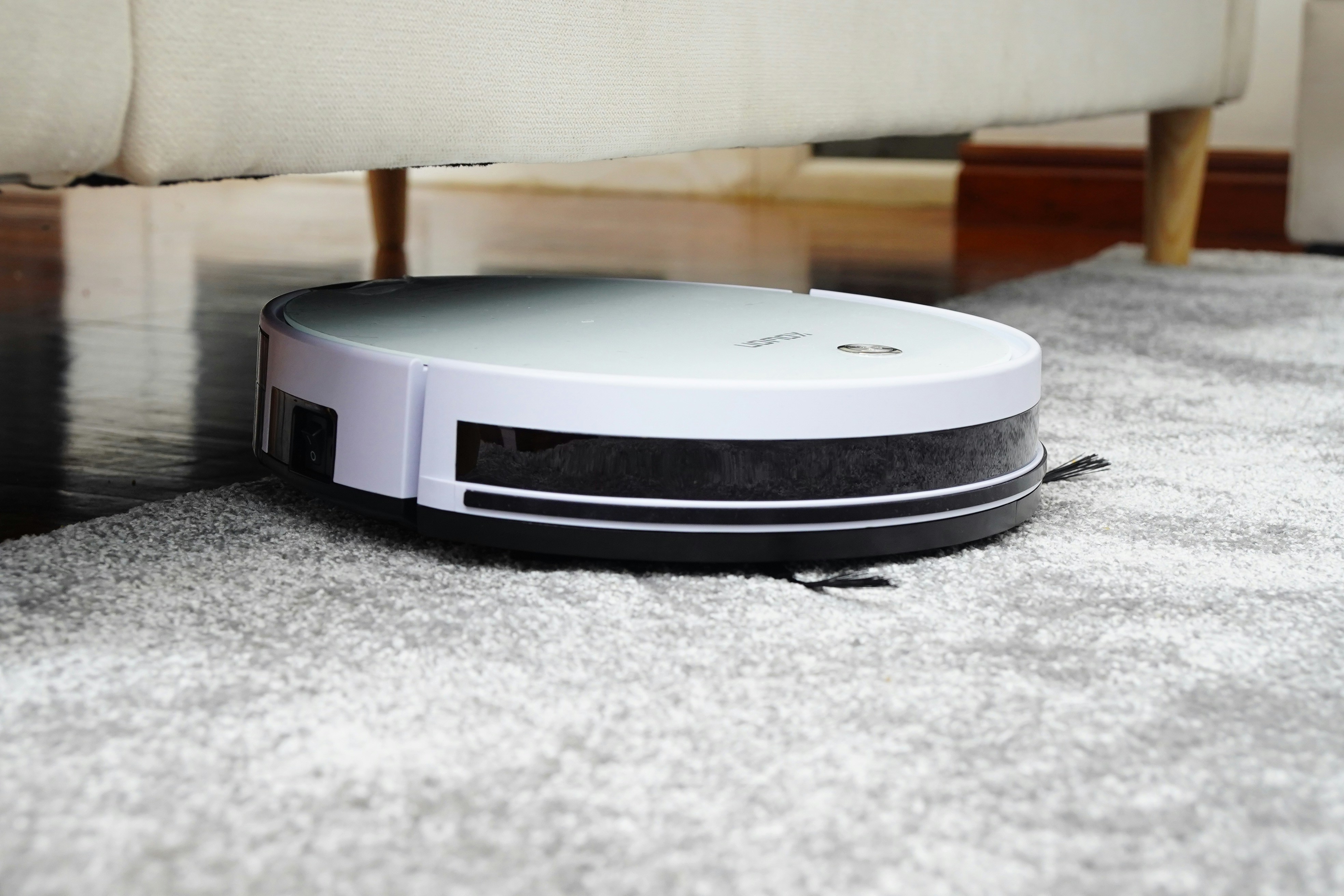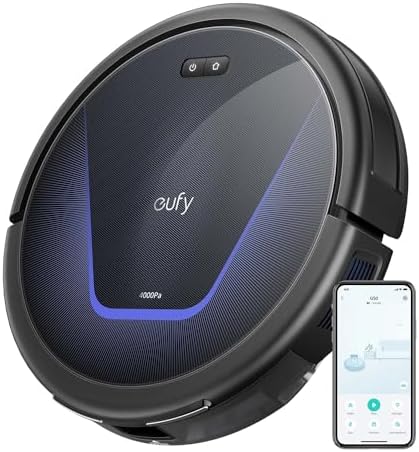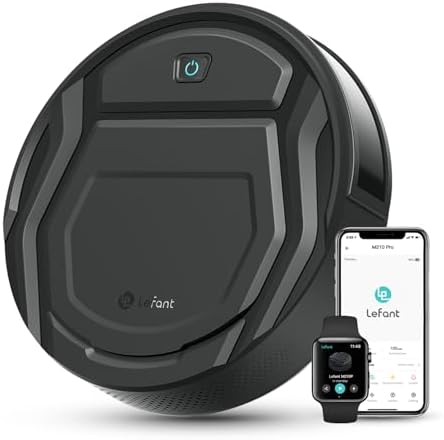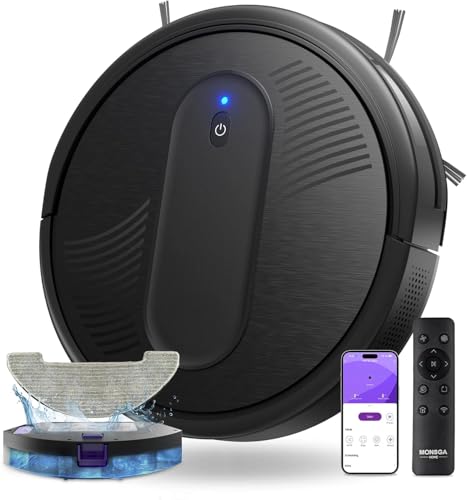Introduction to Robot Vacuum Cleaners
Robot vacuum cleaners, often referred to as robot vacuums, are sophisticated automated devices designed to simplify the cleaning of various floor surfaces, particularly hard floors. These devices operate autonomously, navigating through homes while utilizing advanced sensors and mapping technologies to vacuum dust, dirt, and debris effectively. One of the primary purposes of a robot cleaner is to take on the mundane task of vacuuming, allowing homeowners to enjoy a cleaner living space without dedicating significant time to manual cleaning.
The benefits of adopting a robot vacuum are manifold. Firstly, the convenience they offer is unparalleled; these quiet cleaners can operate while individuals go about their daily activities, providing a seamless cleaning experience. Homeowners can schedule cleaning sessions at their convenience, ensuring that their floors remain well-maintained with minimal effort. Notably, many robot vacuums are equipped with strong suction capabilities that rival traditional carpet cleaners, ensuring thorough cleaning even in areas that are often difficult to reach.
Additionally, robot vacuum cleaners require less maintenance compared to traditional vacuuming methods. Their design typically includes features such as self-charging capabilities and user-friendly interfaces, making them not just easy to operate but also less demanding in terms of upkeep. Many users appreciate the efficiency of these devices, as they continuously optimize their cleaning paths based on your home’s layout. This level of automation, combined with their sleek profiles, embodies a cutting-edge approach to home cleaning that resonates well with busy households seeking efficient solutions.
As robot vacuum cleaners become increasingly popular among homeowners, their ability to deliver effective cleaning on hard floor surfaces while minimizing noise and manual labor ascends as a significant advantage. This appeal reinforces why these innovative appliances continue to gain traction in the market, promising cleaner, more manageable living spaces.
The Technology Behind Automatic Charging
The advancement of robot vacuum cleaners has significantly changed the approach to home cleaning. One of the most innovative features in these devices is their ability to automatically return to charging stations when the battery is low. This functionality primarily relies on a combination of sensors and sophisticated algorithms that facilitate efficient navigation throughout the home. The incorporation of these technologies not only enhances usability but also contributes to the overall effectiveness of the robot cleaner.
Robot vacuums are equipped with various sensors, including infrared, cliff detection, and bumper sensors. These components enable the vacuum to map its environment, identify obstacles, and determine the boundaries of the cleaning area. When the battery reaches a preset threshold, the quiet cleaner utilizes its built-in navigation systems to seek out the closest charging station. This ability eliminates the need for homeowners to monitor battery levels and ensures that the robot vacuum stays powered for the next cleaning session.
Furthermore, the algorithms that govern robot vacuums are designed to optimize cleaning routes and enhance energy efficiency. By calculating the distance to the charging station and assessing the remaining battery life, the robot vacuum can take the most efficient path back. This intelligent decision-making process not only conserves battery power but also minimizes overall cleaning time. Additionally, less maintenance is required, as users do not need to manually intervene to recharge the device frequently. This convenience is especially advantageous for busy households where time is a valuable commodity.
In summary, the seamless integration of sensors and algorithms in robot vacuum cleaners enables automatic charging and efficient navigation. As a result, these devices are always ready to tackle cleaning tasks, ensuring that homes remain pristine with minimal intervention needed from users. This technology represents a significant leap in the development of strong suction vacuum cleaners, allowing for a truly autonomous cleaning experience.
Benefits of Quiet Cleaning on Hard Floors
In today’s fast-paced world, maintaining a clean home without disrupting daily activities is paramount, especially for households with children, pets, or individuals working from home. A robot vacuum equipped with strong yet quiet suction technology provides an efficient solution tailored for hard floor surfaces. The primary advantage of utilizing a quiet cleaner lies in its operational discretion, allowing it to perform cleaning tasks while family members engage in conversations, watch television, or even take a nap.
For households with pets, the introduction of a robot vacuum not only helps in alleviating pet hair buildup but also minimizes disturbances that can cause anxiety amongst animals. The relatively lower noise levels of a quiet cleaner ensure that pets remain calm during cleaning, promoting a more serene household environment. Consequently, utilizing a robot vacuum enhances the overall quality of life, allowing families to complete their tasks without worrying about interruptions from loud appliances.
Moreover, the design of robot cleaners specifically caters to the unique needs of hard floors. Unlike traditional vacuum cleaners that may pose a risk of scratching or damaging surfaces, modern robot vacuum models are engineered with careful consideration of these materials, ensuring safe and effective dirt and debris removal. This is particularly beneficial for homes with hardwood, tile, or laminate floors, as they require a carpet cleaner that is gentle yet powerful enough to tackle dust accumulation.
Another significant benefit is less maintenance requirements associated with these devices. The efficient design of a strong suction vacuum allows it to operate autonomously, requiring minimal user intervention, and thus freeing up precious time for individuals. This amalgamation of quiet operation, effective cleaning on hard floors, and low maintenance makes a robot cleaner an essential appliance for today’s households.
Choosing the Right Robot Vacuum for Your Home
When choosing a robot vacuum, focus on strong suction power for effective cleaning on hard floors and carpets. Look for models with long battery life and smart charging to clean large areas without interruption. Prioritize features like quiet operation, efficient dirt pickup, and intelligent energy use to find the best robot vacuum for your home.
Choose a robot vacuum with a dustbin size that matches your home’s cleaning needs to reduce how often you empty it and save time. Models with multiple cleaning modes and scheduling features also make daily cleaning more convenient and hands-free.
Look for a quiet robot vacuum if you want it to run while you work, relax, or sleep. Many newer models operate at low noise levels and offer smart features like app control, voice commands, and home automation integration. These features make cleaning easier and help you find a vacuum that fits your routine and space.








